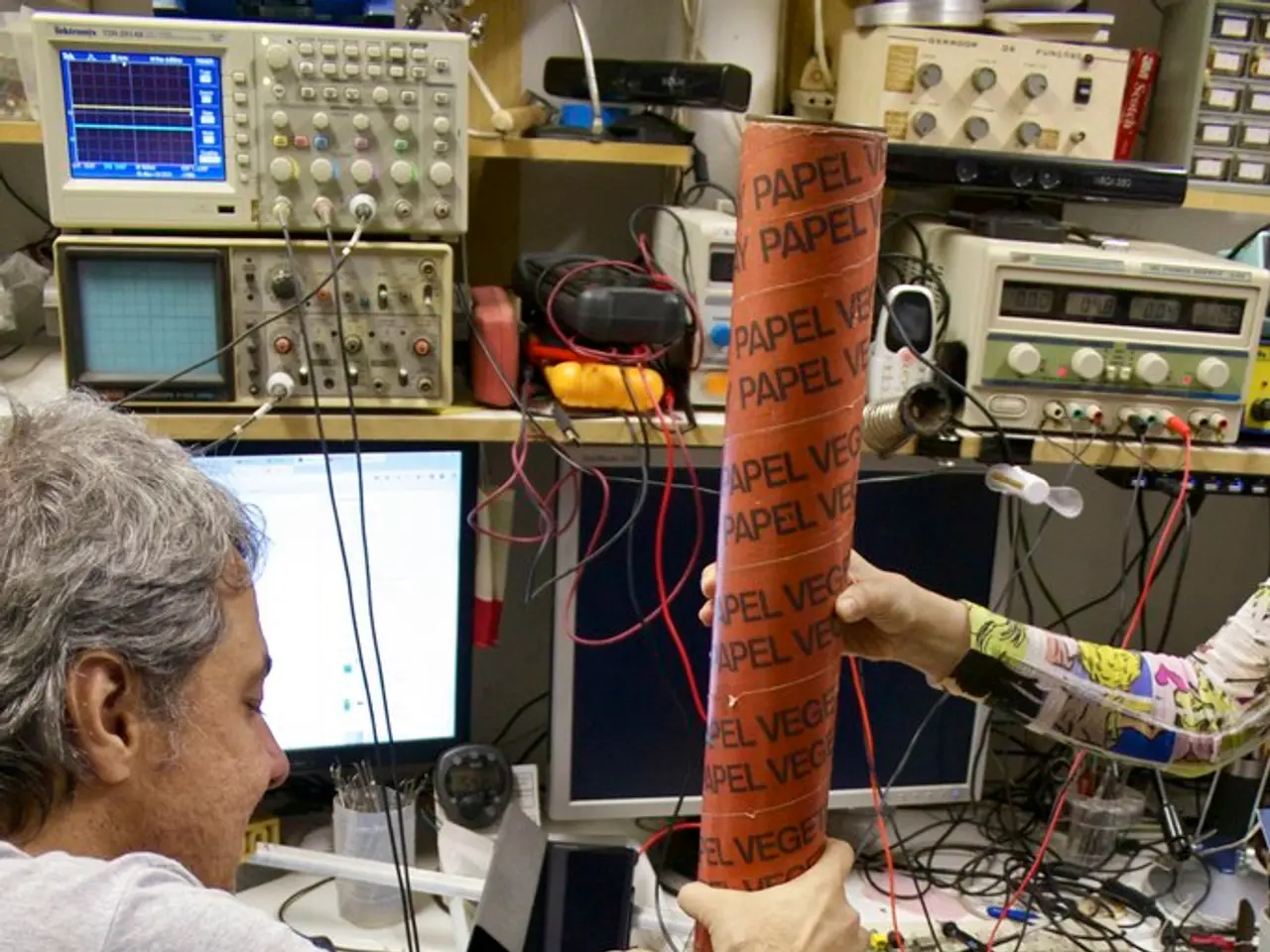Business automation: the significance of human connection in corporate settings
In the rapidly evolving landscape of technology, automation through AI is reshaping job roles and transforming the workplace. According to the Bank of England, up to 15 million jobs in Britain could be at risk of being lost to robots [1]. However, this shift also presents opportunities for new roles that emphasize human skills like empathy, creativity, and complex interpersonal interaction [3].
To prepare for these changes, businesses should focus on defining relationship-driven activities, conducting a talent audit, and creating a team of change-makers to lead the transformation.
Defining Relationship-Driven Activities
Identifying tasks that require human empathy, creativity, complex problem-solving, and interpersonal skills is crucial. These areas, where AI augmentation is limited, should be emphasized in redesigned roles [1][4]. By focusing on human-centric functions, employees can concentrate on high-impact, strategic, and relational tasks while routine parts are automated [2][4].
Conducting a Talent Audit
Assessing current roles and employee capabilities is essential to determine which functions are susceptible to automation and which require transformation or upskilling [2]. Identifying skills gaps, especially around AI literacy, emotional intelligence, critical thinking, and adaptability, can help plan targeted reskilling and redeployment of talent into AI-augmented roles or new career paths within the company [1][2][4].
Creating a Team of Change-Makers
Building cross-functional teams trained in AI fluency can champion the adoption, effective use, and optimization of AI tools throughout the organization [2][4]. These change-makers can lead AI education initiatives such as workshops, AI bootcamps, and continuous learning programs tailored to different departments [2]. This team acts as a liaison between technology and human talent, ensuring "humans remain in the loop" to maintain empathy, ethical oversight, and human judgment in AI-augmented processes [4].
By focusing on this combined approach, businesses can foster a workforce that harnesses AI to boost productivity, remain agile, and mitigate risks of layoffs by proactively evolving roles and skillsets [1][2]. This strategy balances AI-driven efficiency gains with the preservation and enhancement of uniquely human contributions to work.
In addition, positive messages about how a company has embraced and engaged with digital tools while still valuing its people can help attract the right talent. For instance, Capita Resourcing found that businesses believe one in ten job roles will no longer exist by 2025 [5]. However, certain skills, such as leadership, social acumen, responsibility, and creativity, will always be important and irreplaceable by machines [6].
Organisations should prioritize upskilling a diverse team of change-makers who can champion the automation process and communicate that they remain people-driven, even as they adopt new technology [7]. This approach will help attract like-minded digitally savvy workers and drive engagement with digital tools, ensuring a smooth transition into the future of work.
References:
[1] The Guardian. (2017, June 1). Up to 15 million jobs in Britain at risk from robots, Bank of England warns. Retrieved from https://www.theguardian.com/business/2017/jun/01/up-to-15-million-jobs-in-britain-at-risk-from-robots-bank-of-england-warns
[2] World Economic Forum. (2020, October 21). How to prepare for a future of work dominated by AI and automation. Retrieved from https://www.weforum.org/agenda/2020/10/how-to-prepare-for-a-future-of-work-dominated-by-ai-and-automation/
[3] McKinsey & Company. (2017, August). Jobs lost, jobs gained: What the future of work will mean for jobs, skills, and wages. Retrieved from https://www.mckinsey.com/business-functions/mckinsey-analytics/our-insights/jobs-lost-jobs-gained-what-the-future-of-work-will-mean-for-jobs-skills-and-wages
[4] Deloitte. (2019, August 20). The future of work: A human approach. Retrieved from https://www2.deloitte.com/us/en/insights/topics/human-capital/the-future-of-work-a-human-approach.html
[5] Capita Resourcing. (2018, April). The future of work and the impact on recruitment. Retrieved from https://www.capitaresourcing.com/insights/the-future-of-work-and-the-impact-on-recruitment/
[6] World Economic Forum. (2018, July 17). The future of jobs report 2018. Retrieved from https://www.weforum.org/reports/the-future-of-jobs-report-2018
[7] Jo Matkin, source from Capita Resourcing. (2018, April). The future of work and the impact on recruitment. Retrieved from https://www.capitaresourcing.com/insights/the-future-of-work-and-the-impact-on-recruitment/
- In the context of advancing technology and AI, redefining education-and-self-development initiatives for employees should focus on nurturing human skills such as empathy, creative problem-solving, and complex interpersonal interaction, which will become even more vital in the future work landscape.
- As sports teams increasingly adopt technological advancements to enhance performance and analysis, it's essential for aspiring coaches and analysts to be proficient in artificial intelligence to optimize data, providing a competitive edge and ensuring a successful career.




